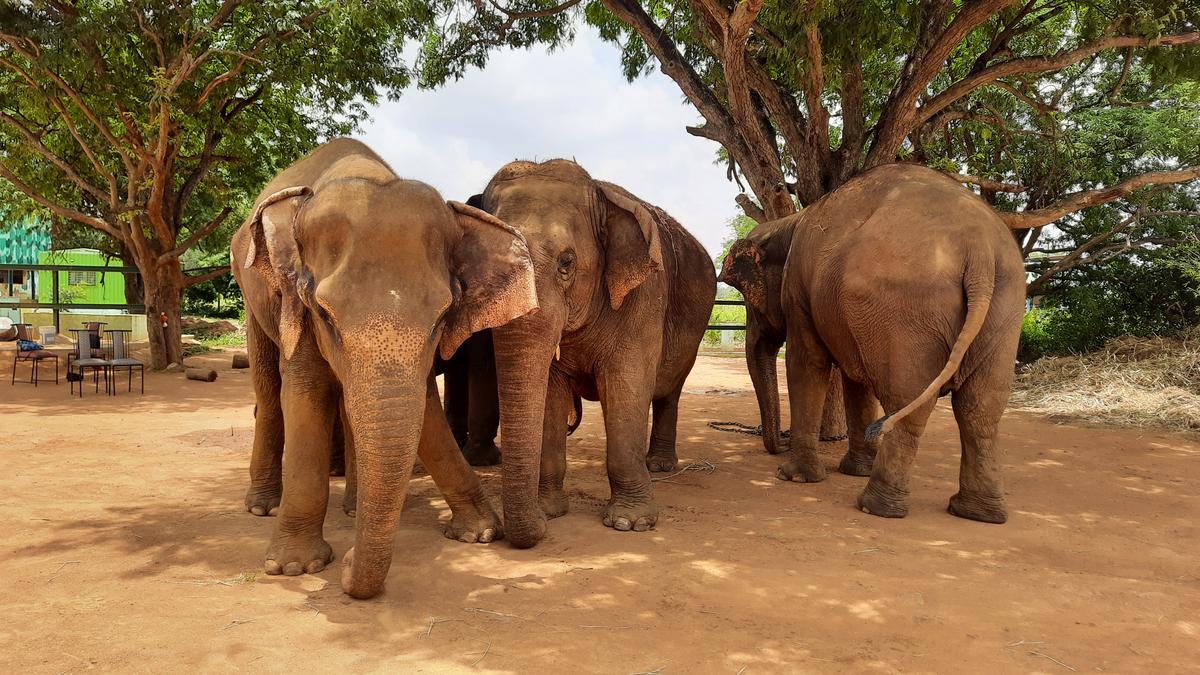
Karnataka’s first elephant care facility tells trumpeting tales of resilience Premium
The Hindu
Durga, Rani, Lakshmi, Janumani, Anisha, and Gowri, all captive elephants once, occupy the facility today where they lead a relaxed life. But a lifetime of captivity has left them with some irreparable damage. At the facility, efforts are on to reverse those as much as possible.
It’s a warm Friday afternoon at the Lakshmisagar Reserve Forest. Vijaykumar V., manager at the Wildlife Rescue and Rehabilitation Centre (WRRC), is walking towards a thicket. “Durga...” he hollers.
From inside the forest, sounds of leaves rustling, branches creaking and twigs snapping emerge. Slowly, from between the trees, appears a big black head with fan-like ears and a long trunk.
Durga, 22-years-old, is one of the six elephants at Karnataka’s first elephant care facility which opened in Malur last year. The facility has completed a year since its opening in September, 2022.
Located on 100 acres of Karnataka Forest Department land, all the infrastructure has been set up by the Forest Department and WRRC, a Bengaluru-based non-profit, takes care of the day-to-day operation.
Durga, Rani, Lakshmi, Janumani, Anisha, and Gowri, all captive elephants once, occupy the facility today where they lead a relaxed life. But a lifetime of captivity has left them with some irreparable damage. At the facility, efforts are on to reverse those as much as possible.
Karnataka boasts of the highest number of elephants in India with the latest elephant census pinning the number at 6,395. According to a survey done in 2019 on captive elephants in the country, there are more than 180 captive elephants in the state.
The survey also found that around three-fourths of the captive elephants in the country are under private ownership. For the jumbos, often, this means abuse, isolation, and exploitation.











